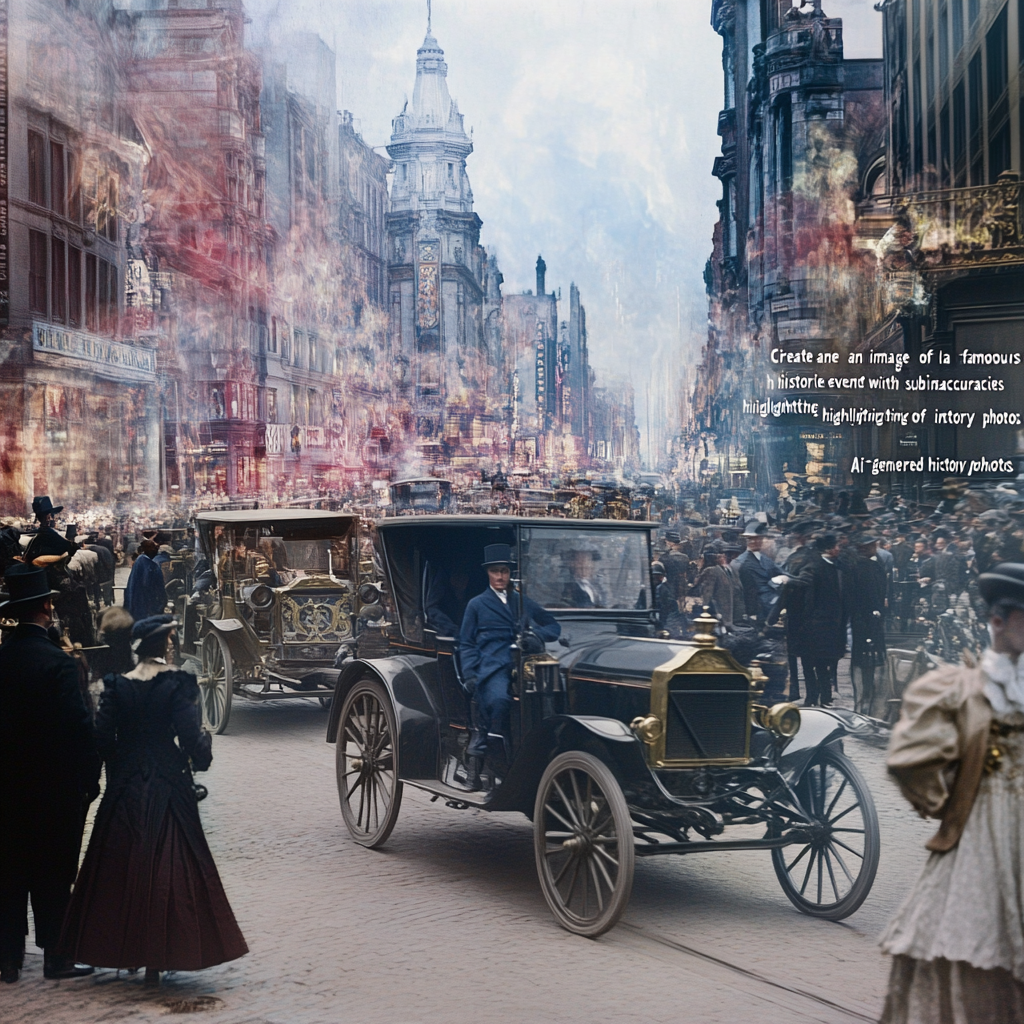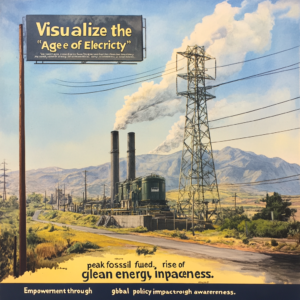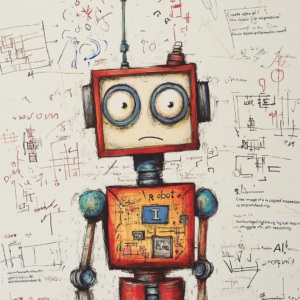
“Phantom Memories: AI Alters Historical Imagery”
The Rising Tide of Fake AI History Photos: A Threat to Our Understanding of the Past
In this whirlwind of modern technology, where every swipe and click can lead to a new rabbit hole, we're dancing on a razor's edge between reality and illusion. Welcome to the age of phony historical images birthed by artificial intelligence—a wild frontier that challenges our grasp on the past. Yes, those pixels you see might not be as trustworthy as they seem, and we need to strap on our critical thinking helmets before we dive headfirst into the tsunami of so-called “fake history.”
"AI has caused a tsunami of fake history, especially images," warns Jo Hedwig Teeuwisse—a Dutch historian on a mission to unveil the truth behind the curtain of online deception. These AI-generated images are popping up like mushrooms after the rain, saturating social media with what appear to be poignant snapshots of moments that shaped our world. Imagine heartfelt scenes, like a weary mother embracing her child during the grim times of the Great Depression, or a soldier whose tired eyes tell the tragic tales of the Vietnam War, and, believe it or not, even the Wright Brothers celebrating their triumph in powered flight. But behind these visual façades lies a game of smoke and mirrors, a touch of wizardry we need to decipher.
First up, let’s not get carried away by the aesthetics of these images. Sure, they look convincing at a glance, but peel back the layers and you’ll find they're nothing more than the constructed fantasies of AI. Take for instance a widely shared photo that allegedly captures Orville and Wilbur Wright in front of their iconic biplane. A charming sight, right? Wrong! Those fresh-faced gents you see weren’t the real deal; they’re just figments of an artificially intelligent imagination. The genuine Wright Brothers, with their bushy mustaches and floppy caps, stand in stark contrast to the blond young men featured in the AI counterfeit.
And it doesn’t stop there. The roster of faux images is extensive, stretching through time to include monumental events that should have left their mark on documentary history. You might stumble upon meticulously crafted depictions of Hiroshima’s atom bomb explosion in 1945 or Soviet troops storming Prague in 1968, not to mention a whimsical glimpse of the Roman Coliseum during its glorious heyday. These creations often focus on history too ancient to have a photographic footprint or on poorly documented events, making them tantalizingly easy to swallow as factual accounts.
But how can we navigate through this visual labyrinth and emerge with our historical integrity intact? Historians like Marina Amaral and Jo Hedwig Teeuwisse might still have a fighting chance in distinguishing the truth from the noise. They’ve developed a keen eye for the telltale glitches that tend to slip through the cracks of AI-generated artifice. Ever seen a hand with six fingers? Or perhaps a plane devoid of a propeller? Start taking notes, because these details matter. Amaral points out, “AI-generated pictures can replicate the style, but they miss the human element—the intent and the stories behind a photograph. They may please the eye, but they lack soul.” That’s a crucial insight, so keep it in your back pocket.
When it comes to authentic photographs, it's the human touch that makes them shine. Real images come with their own brand of charm, often layered with imperfections—like a blurry background or an awkward pose that exudes genuine emotion. As Teeuwisse accurately puts it, “there's usually something that's out of focus, or someone looks silly by accident.” Those little quirks are not imperfections; they are the threads that weave the rich tapestry of our shared history.
Yet, brace yourself! The advances in AI technology are becoming alarmingly swift. It’s only a matter of time before these artificial images become indistinguishable from genuine articles—no more evident digital hiccups to identify them. The prospect of this reality sends chills down the spine of historians and technology enthusiasts alike. This "dangerous" inevitability, as Teeuwisse emphasizes, could turbocharge the spread of disinformation and amplify confusion regarding our understanding of the past. We’re not just talking about misunderstandings here; it’s about eroding trust in legitimate visual evidence, an invaluable tool for piecing together the chronicles of human history.
In this digital age, when our screens can play tricks on our minds, it’s imperative to stay sharp and discerning. How do you protect yourself from falling prey to the beguiling charms of AI-generated historical images? Listen closely, because I've got some tips to keep you cruising through the fog:
-
Verify Sources: Always double-check where the image has originated from. A credible historical source is your best friend in this wily landscape.
-
Look for Imperfections: Pay attention to details that make a photograph authentic—real photos tend to boast a certain degree of flaws that AI struggles to mimic.
-
Consult Experts: When in doubt, refer to historians and other professionals who possess the training to spot the fakes amidst the authentic elements of history.
Navigating this convoluted maze of reality and fiction is no easy feat, especially as technology accelerates beyond what we could ever predict. Yet, with responsibility and curiosity, we can keep the sanctity of our historical records intact—after all, the truth about our past is invaluable, crucial to our understanding of who we are today.
So, as you embark on your journey through the highs and lows of history in this digital age, make it a practice to think critically and tread carefully.
Want to stay up to date with the latest news on neural networks and automation? Subscribe to our Telegram channel: @channel_neirotoken
Remember, history is not just a collection of facts; it’s a living narrative waiting to be understood through the lens of authenticity. Stay informed, stay alert, and let’s make sure our past isn’t obscured by the shadows of deception.

